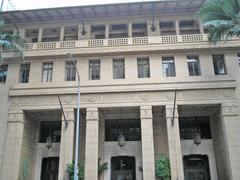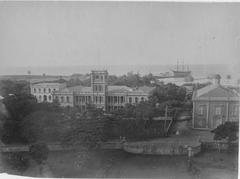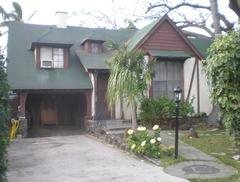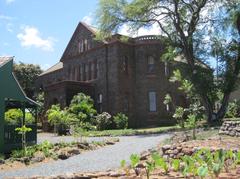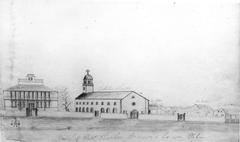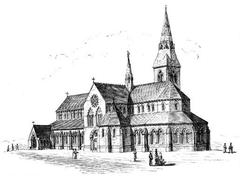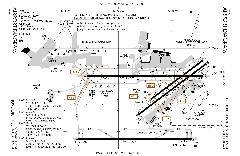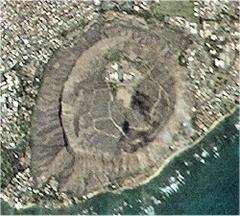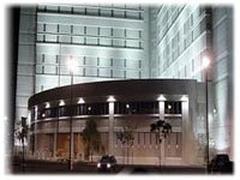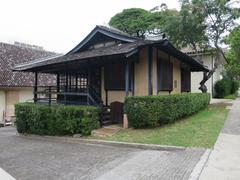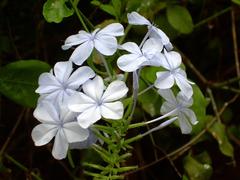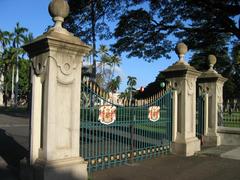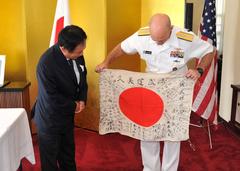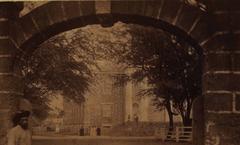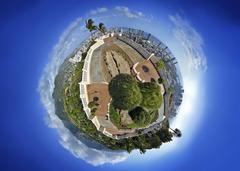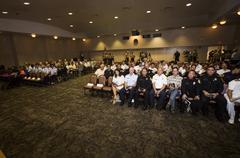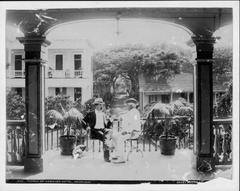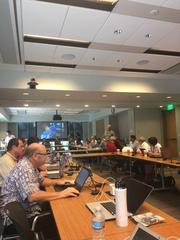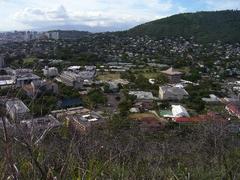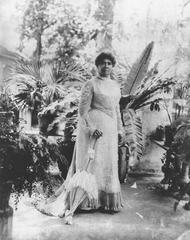Kaipuleohone Visiting Hours, Access, and Guide to Honolulu Historical Sites
Date: 03/07/2025
Introduction: The Significance of Kaipuleohone in Honolulu
Kaipuleohone, located at the University of Hawaiʻi at Mānoa in Honolulu, is a groundbreaking digital archive devoted to preserving and revitalizing endangered languages, particularly those from the Pacific and Asia-Pacific regions. Established in 2008, its name translates to “gourd of sweet words” in Hawaiian—an apt metaphor for its mission to safeguard invaluable linguistic heritage. Unlike traditional museums, Kaipuleohone is a living, dynamic repository serving researchers, indigenous communities, and language advocates worldwide. It is pivotal to the Hawaiian language renaissance and broader global efforts to protect linguistic diversity, reflecting Honolulu’s role as a crossroads of cultures and indigenous knowledge. The archive’s extensive collections are available online and, by appointment, in person, making Kaipuleohone a vital resource for those seeking to engage with linguistic heritage and Honolulu’s rich cultural landscape (Kaipuleohone Digital Archive, University of Hawaiʻi Pacific Language Guide, LDaCA).
Table of Contents
- Origins and Founding of Kaipuleohone
- Mission and Global Impact
- Collections and Notable Holdings
- Technological Infrastructure & Digital Access
- Leadership and Community Collaboration
- Visiting Hours, Tickets, and Access
- Nearby Attractions and Travel Tips
- Role in Research and Cultural Revitalization
- Preservation Challenges and Future Directions
- Frequently Asked Questions (FAQ)
- Conclusion and Recommendations
Origins and Founding
Kaipuleohone was founded in 2008 by linguist Nick Thieberger to address the critical need for the preservation of endangered language recordings and documentation. Housed within the Department of Linguistics at the University of Hawaiʻi at Mānoa, it benefits from the university’s academic rigor and commitment to long-term stewardship (wiki2.org, delaman.org).
Mission and Global Impact
The archive’s primary mission is to digitize, describe, and preserve linguistic materials for open access by researchers, communities, and the public. Kaipuleohone is a member of the Digital Endangered Languages and Musics Archiving Network (DELAMAN), collaborating internationally to ensure a robust infrastructure for language preservation (delaman.org). It symbolizes a commitment to protecting global linguistic diversity and nurturing the “sweet words” of endangered languages.
Collections and Notable Holdings
Kaipuleohone’s collections encapsulate the diversity of the Pacific and Asia-Pacific regions, featuring:
- Kaipuleohone Audio Files: Rare field recordings, interviews, and oral histories.
- Bickerton Collection: Materials from Derek Bickerton on creole language research.
- Blust Collection: Austronesian language documentation by Robert Blust.
- Bradshaw Collection: Papua New Guinea language resources.
- Sato Collection: Hawaiʻi Creole English and pidgin studies by Charlene Sato.
The archive also preserves unique resources such as the only known documentation of Old Hawai‘i Sign Language, making it invaluable for linguists, anthropologists, and community members reconnecting with their heritage (wiki2.org, LDaCA).
Technological Infrastructure and Digital Access
Kaipuleohone is hosted in ScholarSpace, the University of Hawaiʻi’s digital repository, ensuring robust preservation and international metadata standards. This infrastructure allows seamless global access, interoperability with other archives, and consistent updates for enhanced user experience (wiki2.org). The archive is indexed by the Open Language Archives Community (OLAC), maximizing discoverability.
Leadership and Community Collaboration
Directed by Andrea L. Berez-Kroeker, Kaipuleohone is recognized for its collaborative, ethical approach to data stewardship. The archive works closely with indigenous communities, language speakers, and local organizations to ensure respectful use and community agency over linguistic heritage. This participatory model supports both documentation and active revitalization efforts.
Visiting Hours, Tickets, and Access
Digital Access
- Availability: 24/7 online via Kaipuleohone’s website and ScholarSpace.
- Features: Searchable catalogs, downloadable audio/video, and educational resources.
In-Person Access
- Location: Hamilton Library, University of Hawaiʻi at Mānoa, 2550 McCarthy Mall, Honolulu, HI 96822.
- Hours: Library is generally open Monday–Friday, 8:00 AM–8:00 PM; Saturday, 10:00 AM–6:00 PM. Closed Sundays and holidays (University of Hawaiʻi Library).
- Appointments: Required for accessing archival materials or meeting with staff; contact via Kaipuleohone website.
- Entry/Tickets: No entry fee or tickets for library access; some materials may require prior permission (Conditions of Access PDF).
- Accessibility: Hamilton Library is ADA compliant and supports assistive technologies.
Nearby Attractions and Travel Tips
- Getting There: Accessible by car, public transit (TheBus), and bike; parking available for a fee (University of Hawaiʻi Parking Information).
- Nearby Cultural Sites:
- Bishop Museum: Showcasing Hawaiian and Pacific languages, oral traditions, and ethnography (Doctors of Waikiki).
- ʻIolani Palace: The only royal palace in the United States, a symbol of Hawaiian history.
- Lyon Arboretum, East-West Center, John Young Museum of Art: All within or near campus.
- Events: Check Oahu Events in July and the Department of Linguistics Events Calendar for cultural activities.
Role in Research and Cultural Revitalization
Kaipuleohone is a cornerstone of academic research, supporting studies in phonetics, syntax, language contact, and language change. Its open access model empowers communities in language reclamation and educational initiatives, contributing significantly to the Hawaiian language renaissance and global language revitalization efforts.
Preservation Challenges and Future Directions
Key challenges include sustainable funding, evolving technology, and ethical management of sensitive data. Kaipuleohone addresses these through international partnerships, grant support, and the adoption of best digital archiving practices. Future plans include expanding collections, enhancing digital platforms, and deepening community engagement, with innovations like crowdsourcing metadata and integrating multimedia resources (delaman.org).
Frequently Asked Questions (FAQ)
Q: What is Kaipuleohone?
A: A digital archive at the University of Hawaiʻi preserving and providing access to endangered language materials.
Q: Can the public access Kaipuleohone?
A: Yes, materials are available online; in-person access is possible by appointment.
Q: Is there an entry fee or ticket required?
A: No, both digital and onsite access are free; some on-campus parking fees apply.
Q: Are guided tours available?
A: There are no regular tours; research consultations and events are available by arrangement.
Q: How do I use the digital archive?
A: Access via Kaipuleohone Digital Archive or ScholarSpace; tutorials and staff assistance are available.
Q: How can I request access to restricted materials?
A: Submit a request via email as outlined in the Conditions of Access.
Responsible Tourism and Cultural Engagement
- Respect Cultural Protocols: Some materials are sensitive and may require permission.
- Support Local Initiatives: Attend workshops, buy local books, or donate.
- Learn Basic Hawaiian Phrases: Simple greetings foster goodwill.
- Use Public Transport: Reduce your travel footprint (The Invisible Tourist).
Conclusion and Recommendations
Kaipuleohone is an essential hub for the preservation and revitalization of endangered languages, blending advanced digital archiving with deep community collaboration and ethical stewardship. It empowers researchers and indigenous communities to reconnect with their linguistic heritage and makes Honolulu a global leader in language preservation. Whether accessed online or in person, Kaipuleohone invites scholars, language learners, and cultural tourists to participate in sustaining the “sweet words” of Hawaiʻi and the Pacific. Plan your visit or digital exploration, and contribute to global language preservation today (Kaipuleohone Official Site, University of Hawaiʻi Library, Honolulu Visitors Guide).
References
- Kaipuleohone Digital Archive: Preserving Endangered Languages at the University of Hawaiʻi, 2025, Wiki2
- Visiting Kaipuleohone: Hawaii’s Premier Digital Archive for Language Preservation – Hours, Access, and Research Resources, 2025, University of Hawaiʻi Library
- Kaipuleohone Archive Visiting Hours, Access, and Honolulu Historical Sites Guide, 2025, University of Hawaiʻi Department of Linguistics
- Visiting Kaipuleohone: Honolulu’s Digital Archive for Hawaiian Language and Heritage, 2025, LDaCA
- Honolulu Visitors Guide, 2025, Island Life Hawaii

